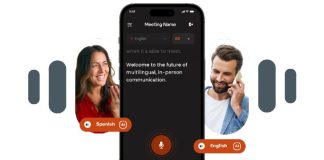
Surprisingly, GV will not have a seat on the board, although GV already has an influence. It appears the funding occurred in November 2022 with Sangeen Zeb, Partner at GV, already introducing several leaders into the company. These included CRO Bryan Dell, who joined in September. Paul Szymczyk, VP of Sales Americas, who joined in September and the VP of Finance and the head of solutions engineering. The inference is that GV has been working with the company for some time before the funding was finalised.
Zeb commented, “In a cloud-native world where businesses are looking for both efficiency and effectiveness, there’s a dire need for organizations to get observability right. Chronosphere has cracked the code to tame the data deluge in complex environments and provides better tools that quickly sift through the most meaningful data for better customer experiences and business outcomes.”

Enterprise Times also asked Martin Mao, CEO and co-founder of Chronosphere, why they decided to add these investors. He answered, “GV and Geodesic were added because they bring both capital and a wealth of expertise to the table. Geodesic provides valuable insight and programs which will be useful as we expand to APAC, Japan, and other global markets; GV is well known for helping companies efficiently.”
Chronosphere valued at $1.3 billion
Alongside the funding round, Chronosphere revealed that it was valued at $1.3 billion. It also announced in November that it had tripled its ARR. That revenue helped it power through a unicorn valuation in February 2022. It has retained 100% of its customers, and its net revenue retention stands at an impressive 145%. Its customer base has also grown quickly, with brands such as Snap, Robinhood, Obsidian Security, Astronomer, and one of the largest real estate platforms in the world, selecting its solutions. Companies such as Visa, Doordash and Abnormal already use its platform.
Ryan Sokol, VP of Engineering at DoorDash commented, “Chronosphere’s game-changing platform gives us the visibility and control to manage our observability data, especially with our unprecedented growth. In fact, customers use Chronosphere’s cloud-native observability platform, which enables customers to transform their data based on the need, context, and utility to optimize costs, improve user experience, and solve problems faster. The average customer optimizes their data set by 48% for significant additional cost savings.”
At Abnormal Security, Chronosphere offers scalability for its monitoring challenges as the company rapidly scales. Elder Yoshida, a Software Engineering Tech Lead Manager on Abnormal’s cloud infrastructure team, commented, “Our goal is to never refuse business, and running our own Prometheus had become a blocker to that goal,” Yoshida continuesd, “Chronosphere observability is making it so we never say no to customers.”
The scale of the savings for large companies was highlighted in a recent Forrester Consulting TEI report. Based on research across several Chronosphere customers, Forrester identified that, on average, customers using the Chronosphere cloud native observability platform returned $7.9 million in benefits over three years, with $4.9 million in cost savings, for a 165% return on investment.
How will it spend the funding?
Mao commented, “This funding underscores the crucial market need for powerful cloud-native observability solutions to generate positive business outcomes – especially critical now as companies seek more efficient and effective ways to improve customer experiences. We plan to use this latest investment to bring our forward-looking observability solution to the broader market as we continue to disrupt legacy solutions that provide too little, too late for too much cost.”
With 250 employees worldwide, the company is looking to add further headcount throughout 2023. It will also use the funding to “support continued innovation and go-to-market efforts for its market-leading cloud native observability platform”. Enterprise Times also asked Chronosphere to clarify what the broader market means. The reply was, “Chronosphere currently has customers across a range of industries including fintech, real estate, security and Saas and Enterprise market and looks to deepen its penetration in these markets. Beyond this, companies that look to build and run applications in cloud native environments are prospective customers and can gain immediate impact by using our platform.”
LinkedIn indicates that the company has over 290 employees, and while several studied at Vilnius university, most are based in the US (according to LinkedIn). However, the company has a hub in Vilnius, Lithuania and the US (Source Craft.co). The inference is that it will not yet look for further overseas expansion in terms of footprint, but it will be interesting to see how it continues to achieve growth and where it decides to expand geographically before it raises further funds.
Enterprise Times- What does this mean?
This is a clear validation of the Chronosphere strategy, and the investors clearly believe that there is a massive need for its solution. As enterprises look to develop hybrid cloud architectures and composable ERP solutions, observability is becoming increasingly important. What is lacking from the announcement are details of what it intends to invest in development and the product roadmap. With the money be used to extend sales, or is there something big on the roadmap for the vendor?

























